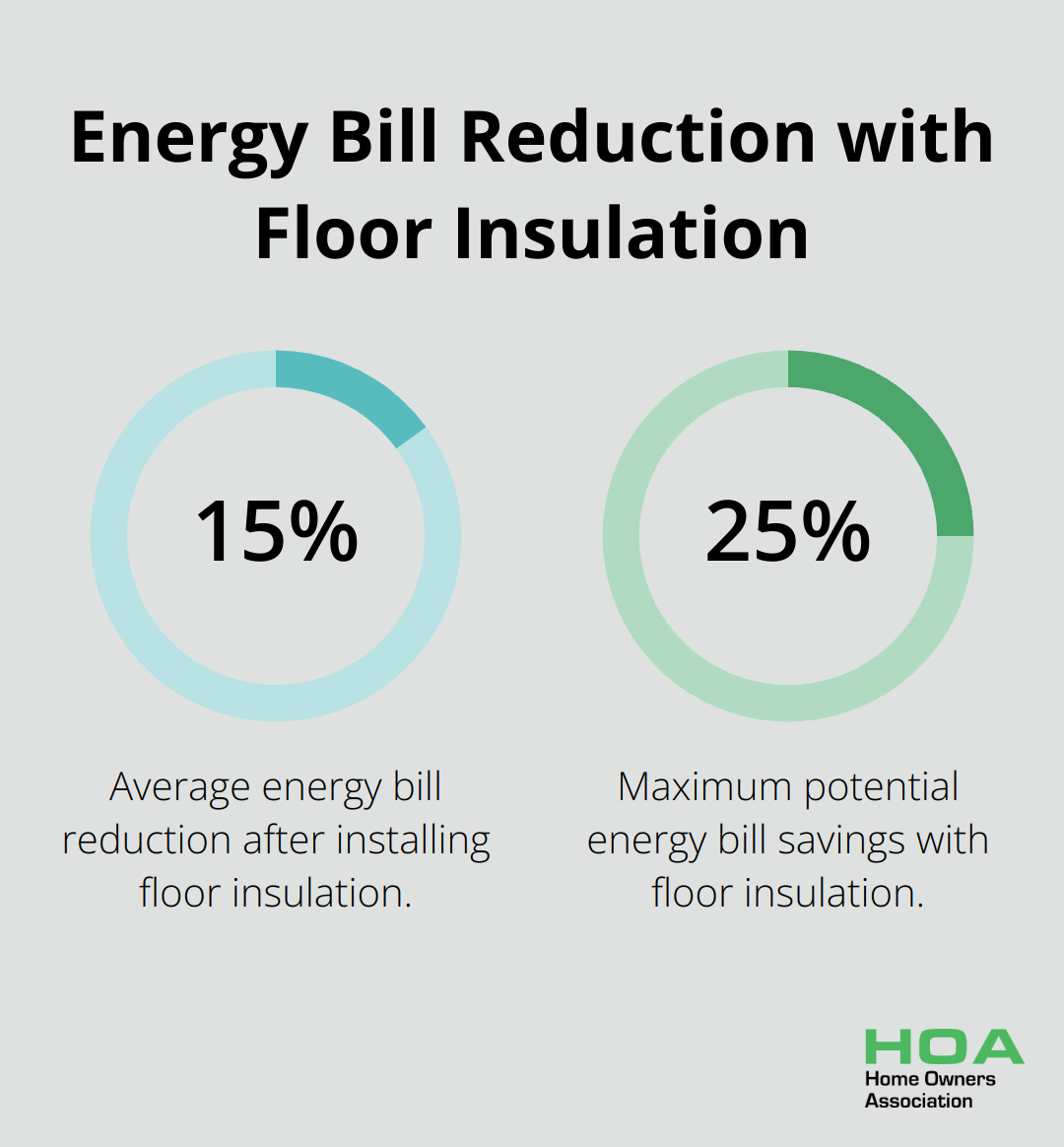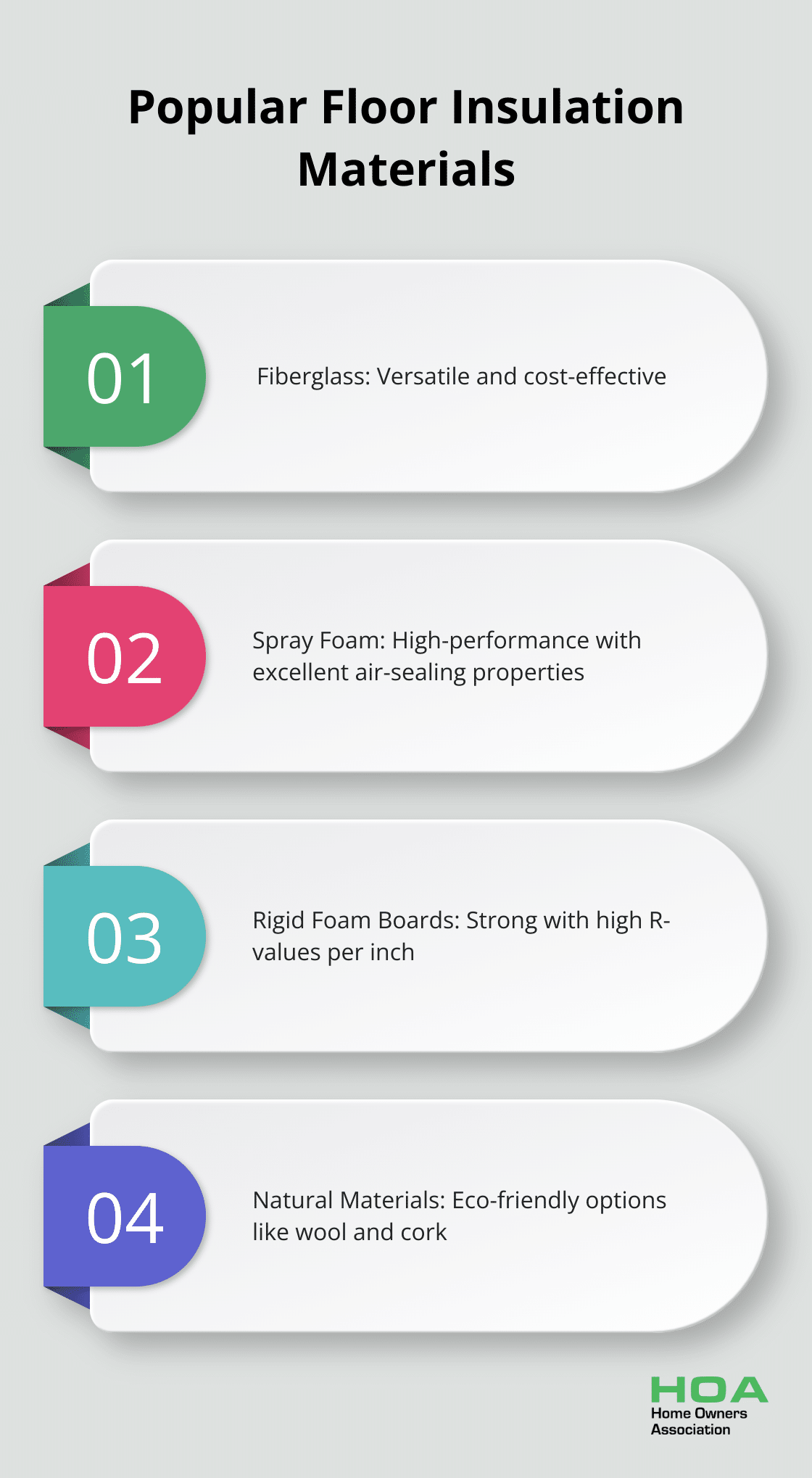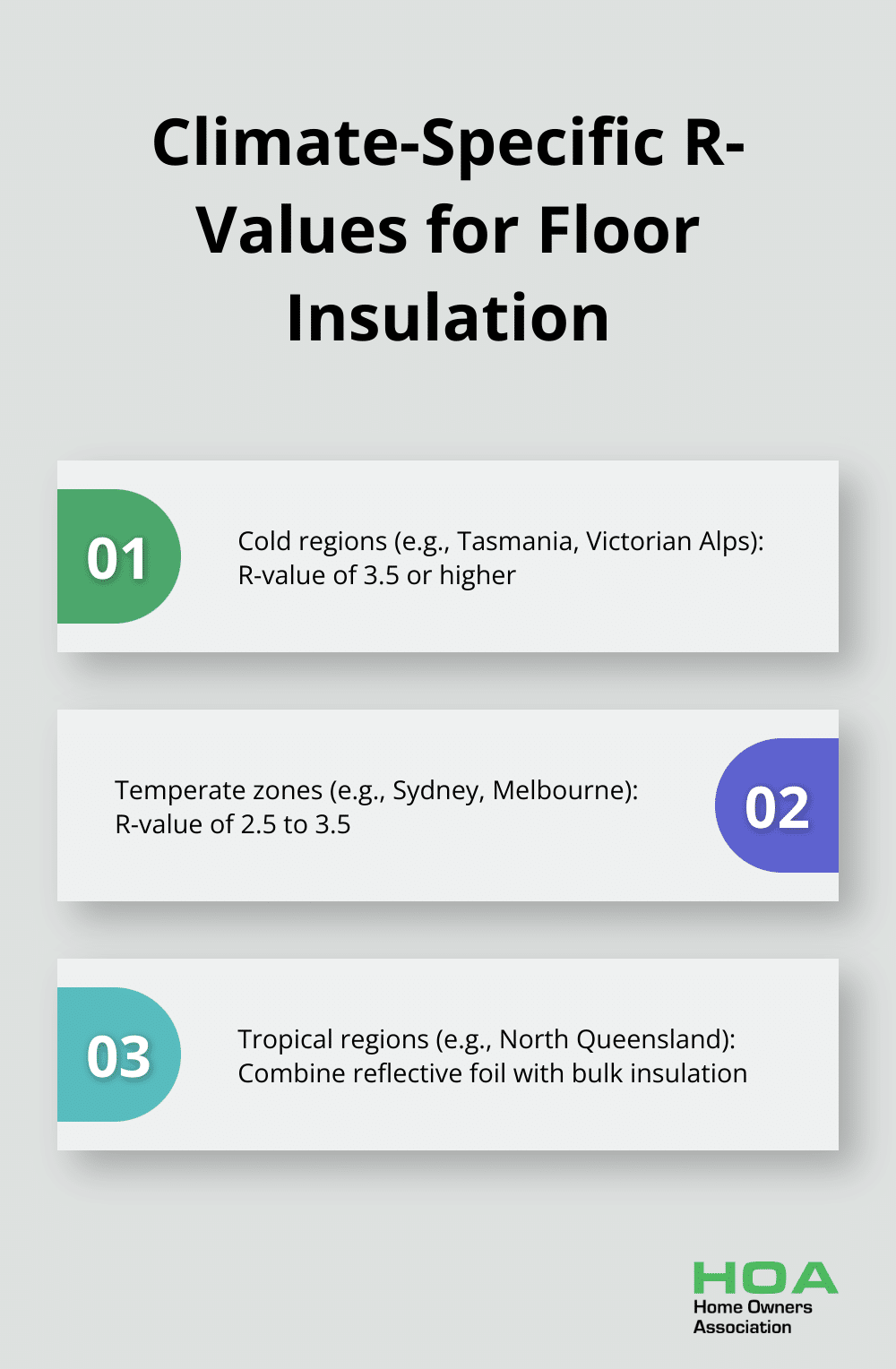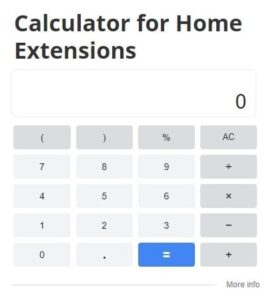
At Home Owners Association, we understand the importance of a comfortable and energy-efficient home.
Floor insulation is a key component in achieving these goals, yet it’s often overlooked by homeowners.
In this post, we’ll explore various floor insulation options that can help you reduce energy costs and enhance your living space.
We’ll guide you through the different materials available and provide tips on selecting the best solution for your specific needs.
Why Floor Insulation Matters
Energy Bill Reduction
Floor insulation serves as a powerful tool to combat high energy costs. The Department of Industry, Science, Energy and Resources reports that in a room, 0.81 m2 of the ceiling is uninsulated. The heat lost through the uninsulated part of the ceiling will double the heat lost through the whole ceiling. The installation of proper insulation can lead to substantial energy savings. Homeowners often see average energy bill reductions of 10-15% after installing floor insulation, with some experiencing savings of up to 25%.

Enhanced Living Comfort
Cold floors can make a home uncomfortable, even when the thermostat indicates a warm temperature. Floor insulation acts as a barrier, preventing the chill from seeping up through floorboards. This results in warmer, more comfortable living spaces, especially in rooms above unheated areas like garages or crawl spaces.
Unexpected Noise Reduction
While not its primary function, floor insulation can have a surprising effect on noise levels within a home. These acoustic materials for flooring work by absorbing, blocking, or dampening sound waves – effectively blocking noise from penetrating. This benefit is particularly noticeable in multi-story homes or apartments in busy urban areas.
Long-Term Financial Benefits
The initial investment in floor insulation pays off over time through reduced energy costs. Most homeowners see a return on their investment within 3-5 years. Additionally, a well-insulated home often attracts potential buyers, potentially increasing property value. These eco-friendly improvements can create healthier living spaces and contribute to long-term financial benefits.
Floor insulation represents more than just immediate comfort-it’s a smart, long-term investment in a home’s efficiency and value. As we explore the various options available, it’s important to consider how different materials can meet specific insulation needs.
What Floor Insulation Materials Work Best?
Floor insulation plays a vital role in creating an energy-efficient and comfortable home. Let’s explore the most effective materials for floor insulation, each with its unique benefits and applications.

Fiberglass: The Versatile Classic
Fiberglass batts and rolls remain a popular choice for floor insulation due to their cost-effectiveness and ease of installation. R-value is the temperature difference per unit of heat flux needed to sustain one unit of heat flux between the warmer surface and colder surface of a barrier. Fiberglass provides reliable thermal resistance. It works particularly well in suspended timber floors, where installers can easily fit it between joists. However, proper installation is essential to avoid gaps that can reduce its effectiveness.
Spray Foam: The High-Performance Option
For those who seek maximum insulation and air-sealing properties, spray foam stands out as an excellent choice. Available in open-cell and closed-cell varieties, open-cell spray foam is softer, lighter and more flexible than closed-cell spray foam. As open-cell is not as dense as closed-cell foam, it also has different insulation properties. Closed-cell foam, while more expensive, offers superior moisture resistance, making it ideal for areas prone to dampness. Its ability to expand and fill gaps makes it particularly effective for irregular spaces or around pipes and electrical outlets.
Rigid Foam Boards: Strength and Efficiency
Rigid foam boards, such as extruded polystyrene (XPS) or polyisocyanurate (polyiso), offer high R-values per inch of thickness. XPS provides an R-value of about 5 per inch, while polyiso can reach up to 6.5. These boards excel at insulating concrete slab floors or in situations where space is at a premium. Their strength also makes them suitable for load-bearing applications.
Natural Materials: Eco-Friendly Alternatives
For environmentally conscious homeowners, natural insulation materials like wool and cork offer sustainable options. Sheep’s wool insulation not only insulates effectively but also naturally regulates humidity. Cork, while less common, provides excellent thermal and acoustic insulation properties.
Selecting the Right Material
When selecting floor insulation, consider factors such as your local climate, the specific area of application, and your budget. For example, in humid coastal areas, moisture-resistant options like closed-cell spray foam or XPS rigid boards might suit your needs better. In drier inland areas, fiberglass or natural materials could suffice.
Proper installation is just as important as material selection. While some materials like fiberglass batts can become a DIY project for experienced homeowners, others like spray foam require professional installation. Consulting with insulation experts will ensure you get the most out of your insulation investment.
Now that we’ve covered the various insulation materials, let’s move on to how you can choose the right floor insulation for your specific home and needs.
How to Select the Best Floor Insulation
Climate Considerations
The climate of your region plays a significant role in determining the most effective insulation type. Colder regions of Australia, such as Tasmania or the Victorian Alps, require higher R-values to combat heat loss. In Climate Zone 8, the deemed floor construction resistance for the building is R=3.5. In contrast, warmer climates like Queensland may only need R-values of 2.5 to 3.5.

Budget Factors
Your budget will influence your choice of insulation. Fiberglass batts offer a cost-effective solution, averaging $5 to $7 per square meter. Spray foam insulation, while more expensive at $15 to $25 per square meter, often results in greater energy savings over time.
Floor Type Considerations
The type of floor in your home impacts insulation selection. Suspended timber floors often benefit from batts or rolls due to easy installation between joists. Concrete slab floors work well with rigid foam boards or spray foam insulation applied underneath or around the slab’s perimeter.
Homes with crawl spaces require moisture-resistant options like closed-cell spray foam or extruded polystyrene (XPS) boards to prevent water damage and mold growth. The Australian Institute of Refrigeration, Air Conditioning and Heating (AIRAH) emphasizes the importance of vapor barriers in these scenarios to further protect against moisture issues.
Professional Assessment Benefits
Professional assessment proves invaluable when selecting floor insulation. Conducting a home energy audit will help you to make valuable savings on your energy bills and detect areas where you are losing energy without cause. These assessments typically cost between $200 to $600 but can lead to significant long-term savings by ensuring optimal insulation placement and material selection.
Professional installers bring expertise in dealing with potential challenges such as electrical wiring, plumbing, and ventilation requirements. They ensure proper installation techniques, which maximize insulation effectiveness. For instance, the gap-free installation of batts can improve their performance by up to 50% compared to poorly installed insulation.
Climate-Specific Recommendations
Tropical regions like North Queensland benefit from reflective foil insulation combined with bulk insulation. This combination helps reflect radiant heat while also providing thermal resistance. Homes in temperate zones (such as Sydney or Melbourne) often yield the best results with a mix of bulk insulation for winter warmth and reflective insulation for summer cooling.
Alpine regions demand special attention. These areas not only require a higher R-value but also prevention of thermal bridging. Continuous insulation methods, such as applying a layer of rigid foam board over the entire floor surface before installing the final flooring material, can significantly reduce heat loss through structural elements.
For older homes, blown-in cellulose insulation provides an effective and non-intrusive option. Insulate around windows and doors to prevent heat loss and improve overall energy efficiency.
Final Thoughts
Floor insulation options provide homeowners with powerful tools to enhance energy efficiency, comfort, and long-term value in their properties. The right materials and proper installation can significantly reduce energy bills and create a more comfortable living environment. High-quality insulation often pays off through energy savings and improved home comfort, despite potentially higher initial costs.
Professional assessment and installation can make a substantial difference in the effectiveness of your insulation. Our team of experts at Home Owners Association in Melbourne, Australia, offers personalized guidance on home improvements. We provide access to trade pricing and discounts on construction and renovation materials (including insulation products).
Floor insulation is a smart investment in your property’s future. It not only improves immediate living conditions but also increases your home’s market value. Our commitment is to help homeowners navigate the complexities of floor insulation options and other home improvement projects, ensuring the best results for specific needs and budgets.





